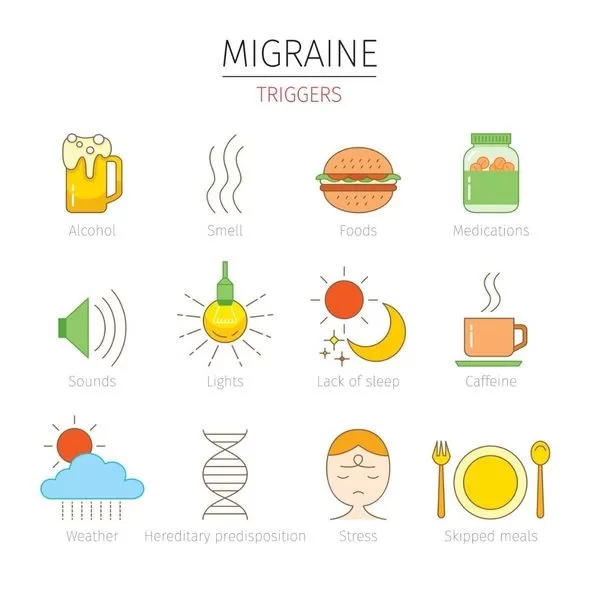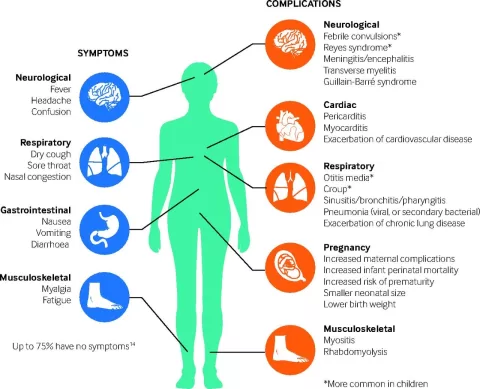Migraine triggers and weather have long been a topic of discussion among those who suffer from these debilitating headaches. Many migraine sufferers report a direct correlation between changing weather patterns and the onset of their episodes, indicating that the atmosphere can indeed play a significant role in migraine frequency. Certain climate-related factors, such as high temperatures, humidity, and even air pollution, can exacerbate symptoms, leading to what some refer to as “climate change headaches.” Understanding these environmental migraine triggers is crucial for effective migraine management, especially as extreme weather events become more prevalent. By identifying specific weather patterns that correlate with their migraine episodes, individuals can better navigate their triggers and take proactive steps to mitigate their effects.
When discussing the relationship between climatic shifts and headache disorders, the terms “environmental headache triggers” and “meteorological migraine factors” come into play. Individuals often face a variety of symptoms that can intensify due to environmental changes such as air quality fluctuations and temperature extremes. Awareness of these headache-inducing environmental elements is critical, especially in light of increasing reports of conditions like air pollution headaches and their links to migraine development. Therefore, integrating practical migraine management tips into daily routines can empower individuals to combat their unique headache challenges associated with changing weather and pollutants. By exploring various angles of this complex issue, we can better understand and address the myriad factors influencing migraine occurrences.
Understanding Migraine Triggers and Weather
Migraine triggers are often diverse and individualized, and one significant aspect that many sufferers report is the impact of weather fluctuations. Research has suggested that elements like temperature changes, humidity levels, and atmospheric pressure can significantly influence the frequency and severity of migraine attacks. For instance, studies show that some migraine sufferers experience symptoms when there is a sudden change in weather, indicating a strong correlation between their headaches and meteorological conditions.
However, the complexity arises in understanding which specific weather conditions provoke these responses. Factors such as high humidity may trigger migraines due to increased sweat and dehydration, while sudden drops in temperature can lead to muscle tension and stress. It’s essential for migraine sufferers to track their symptoms in relation to weather patterns to better understand their specific triggers and develop effective strategies for management.
The Role of Environmental Changes in Migraine Management
Environmental factors are increasingly recognized as potential triggers for migraine attacks. Conditions like air pollution have been observed to worsen headache symptoms in susceptible individuals, particularly during warmer months. How pollutants affect the body can differ from person to person, but many report heightened migraine frequency when exposed to poor air quality. This correlation emphasizes the importance of monitoring local environmental conditions for effective migraine management.
Additionally, environmental changes such as altitude can also play a crucial role in triggering migraines. For individuals traveling to or living at high altitudes, the lower oxygen levels can induce headaches and exacerbate migraine conditions. As climate change increases the occurrence of environmental stressors, understanding these connections becomes vital for developing personalized management strategies and preventive measures in combating migraine attacks.
Climate Change and Its Impact on Migraine
Climate change is a pressing global issue that has far-reaching effects on health, including the potential to increase the prevalence and intensity of migraine headaches. Research points to a direct correlation between rising temperatures and a greater number of emergency department visits for headache-related issues, suggesting that extreme heat may serve as a catalyst for triggering migraine attacks. As temperatures rise, so does the frequency of events that can lead to stress and discomfort, ultimately resulting in heightened migraine activity.
Furthermore, the environmental stressors associated with climate change—such as increased exposure to air pollution and the occurrence of extreme weather events—can exacerbate the migraine condition. For example, strong winds or the presence of wildfire smoke can escalate headache symptoms in individuals already prone to migraines. Being aware of these connections is vital for sufferers, allowing them to take preventative measures, such as staying indoors during hazardous weather conditions or utilizing air filtration systems to reduce exposure to pollutants.
Air Pollution: A Hidden Trigger for Migraines
Air pollution is not just an environmental concern but also a significant migraine trigger for many individuals. Studies have indicated that exposure to high levels of pollutants, such as particulate matter and ground-level ozone, can increase the frequency and severity of migraine attacks. This underscores the need for ongoing research into how air quality affects neurological health and highlights the potential benefits of improving local environmental policies.
Additionally, with climate change leading to varying levels of pollution throughout different seasons, migraine sufferers may need to be particularly cautious during warmer months when pollution levels often peak. Using air quality monitoring apps can provide real-time updates on pollution levels, helping individuals plan their outdoor activities accordingly and potentially avert migraine episodes associated with poor air quality.
Strategies for Managing Weather-Induced Migraines
Managing weather-induced migraines requires a proactive approach, starting with understanding personal triggers. Keeping a detailed migraine diary can help identify any patterns between weather changes and migraine occurrences. Noting activities, atmospheric conditions, and how one feels during different weather patterns can aid in pinpointing specific triggers, allowing individuals to take necessary precautions.
Moreover, utilizing technology for tracking weather and air quality can enhance migraine management strategies. Many mobile applications now provide notifications for severe weather changes or poor air quality, enabling users to stay informed and avoid potential triggers. By combining personal observation with technological assistance, migraine sufferers can develop effective strategies to lessen the impact of weather on their headaches.
The Importance of Consultation in Migraine Management
Consulting with healthcare professionals is crucial for anyone experiencing frequent migraines, especially if environmental factors are suspected triggers. A medical professional can guide individuals in identifying their specific triggers, tailoring treatment plans that suit their needs. This may involve preventive medications designed to reduce the intensity and frequency of attacks while taking into account the patient’s lifestyle and environmental exposures.
Additionally, healthcare providers can offer insight into lifestyle changes that may improve patients’ resilience against migraine triggers. For example, suggesting a balanced diet, proper hydration, and adequate sleep can vastly improve overall well-being and help reduce the likelihood of migraines. Building an open dialogue with a doctor about migraine triggers and management can empower individuals to take control of their health and potentially minimize migraine occurrences.
Tips for Coping with Heat-Related Migraines
Heat is a common migraine trigger for many individuals, particularly during the summer months or in regions with high temperatures. To cope effectively, it is advisable to maintain a cool environment, utilizing air conditioning or fans to mitigate extreme temperatures. Staying indoors during peak heat hours can also prevent the onset of migraines caused by heat exposure, allowing individuals to enjoy warmer weather without the burden of headaches.
Furthermore, ensuring proper hydration is essential in managing heat-related migraines. Consuming cold beverages, and applying ice packs can significantly alleviate the discomfort associated with migraines triggered by high temperatures. By prioritizing self-care during warmer days, individuals can minimize the impact of heat on their health while enjoying outdoor activities safely.
Recognizing Your Personal Migraines Triggers
Identifying personal migraine triggers is integral to effective migraine management. While factors such as stress and hormonal fluctuations are widely recognized, it is crucial to explore individual sensitivities to weather, environmental changes, and climate-related elements. Participants in drawing correlations between their migraines and specific conditions can develop insights into how to navigate their everyday life more comfortably.
One effective method is to maintain a comprehensive migraine diary, documenting not just head pain episodes but also accompanying environmental factors like temperatures, humidity, and pollution levels at those times. This practice can help illustrate a clearer connection between migraines and various environmental elements, empowering individuals to make informed choices about their activities and surroundings.
The Connection Between Weather Patterns and Migraine Symptoms
Weather patterns play a significant role in the experience of migraines for many individuals. For instance, changes in barometric pressure, high humidity, and even windy conditions have been noted as common triggers. When there are drastic shifts in these parameters, migraine sufferers might experience an uptick in the frequency and intensity of their attacks. Understanding these connections can aid in planning and prevention.
By observing and analyzing the weather prior to potential migraine episodes, individuals can better prepare for incoming weather systems that may trigger their migraines. This can encompass simple lifestyle adjustments such as reducing outdoor activities on days of high humidity or barometric fluctuations. By staying vigilant and informed, migraine sufferers may be able to significantly reduce their incidence of headaches associated with weather changes.
Frequently Asked Questions
What are common weather-related migraine triggers?
Weather-related migraine triggers can vary greatly among individuals but commonly include changes in temperature, humidity, and atmospheric pressure. High temperatures and low humidity are known to correlate with increased migraine incidents, while cold weather and temperature swings can also provoke attacks.
How does climate change impact migraine sufferers?
Climate change can exacerbate migraines through rising temperatures, increased air pollution, and extreme weather events. Studies indicate that every 5-degree rise in temperature could lead to a 4% increase in emergency department visits for headaches, highlighting the need for awareness and coping strategies.
Can air pollution cause migraines?
Yes, air pollution is a recognized migraine trigger, especially during warmer weather. Pollutants can cause inflammation and alter blood flow in the brain, increasing the frequency and intensity of migraine attacks.
What role does humidity play in migraine management?
Humidity levels can significantly affect migraine occurrences. For many, high humidity can exacerbate headaches, making it crucial to monitor weather conditions and stay indoors during periods of high humidity to mitigate migraine symptoms.
What steps can I take to track migraine triggers related to weather?
Keep a detailed migraine diary to note the timing of attacks alongside weather conditions. This can help identify patterns and specific weather-related triggers for your migraine episodes.
How can I manage migraines triggered by extreme heat?
To manage heat-related migraines, stay hydrated, avoid outdoor activities during peak heat hours, use air conditioning or fans, and apply cold packs to your head to help alleviate symptoms.
Are certain altitudes more likely to trigger migraines?
Yes, studies indicate that being at altitudes above 8,500 feet can trigger migraines, as the change in atmospheric pressure and oxygen levels may contribute to headache onset.
What are effective migraine management tips for those affected by environmental triggers?
Effective migraine management tips include monitoring air quality, using air purifiers indoors, keeping track of your symptoms in relation to environmental conditions, and consulting a healthcare provider for tailored treatment options.
Does weather sensitivity differ from person to person?
Absolutely, weather sensitivity varies widely among individuals with migraines. Some may find certain weather patterns trigger their symptoms, while others may not experience any correlation, making personal observation crucial.
How can I minimize the impact of climate change on my migraines?
To minimize the impact, stay informed about local weather patterns, adjust your routines during extreme weather events, maintain a healthy lifestyle, and consult with your healthcare provider for preventative strategies.
| Aspect | Key Points |
|---|---|
| Migraine Triggers | Common triggers include stress, lack of sleep, hormonal changes, and caffeine. Weather also plays a role. |
| Weather Impact | Weather changes, such as temperature fluctuations and humidity, can trigger migraines. Sensitivities vary by individual. |
| Environmental Factors | Air pollution during warm weather and high altitudes above 8,500 feet are known triggers for migraines. |
| Climate Change Effects | Extreme weather conditions can worsen headaches; every 5-degree temperature rise correlates to a 4% increase in emergency visits for headaches. |
| Prevention Strategies | Keeping a migraine diary and monitoring weather conditions can help identify triggers. Consult with a doctor for management options. |
Summary
Migraine triggers and weather are intricately connected, impacting how individuals experience and manage their migraine attacks. Factors such as temperature changes, humidity, and air pollution can intensify the occurrence of migraines. Understanding these triggers is crucial for effective management, allowing individuals to take proactive measures to reduce the frequency and severity of migraine episodes. By monitoring weather conditions and identifying personal triggers, individuals can better manage their headaches and improve their quality of life.
The content provided on this blog (e.g., symptom descriptions, health tips, or general advice) is for informational purposes only and is not a substitute for professional medical advice, diagnosis, or treatment. Always seek the guidance of your physician or other qualified healthcare provider with any questions you may have regarding a medical condition. Never disregard professional medical advice or delay seeking it because of something you have read on this website. If you believe you may have a medical emergency, call your doctor or emergency services immediately. Reliance on any information provided by this blog is solely at your own risk.








